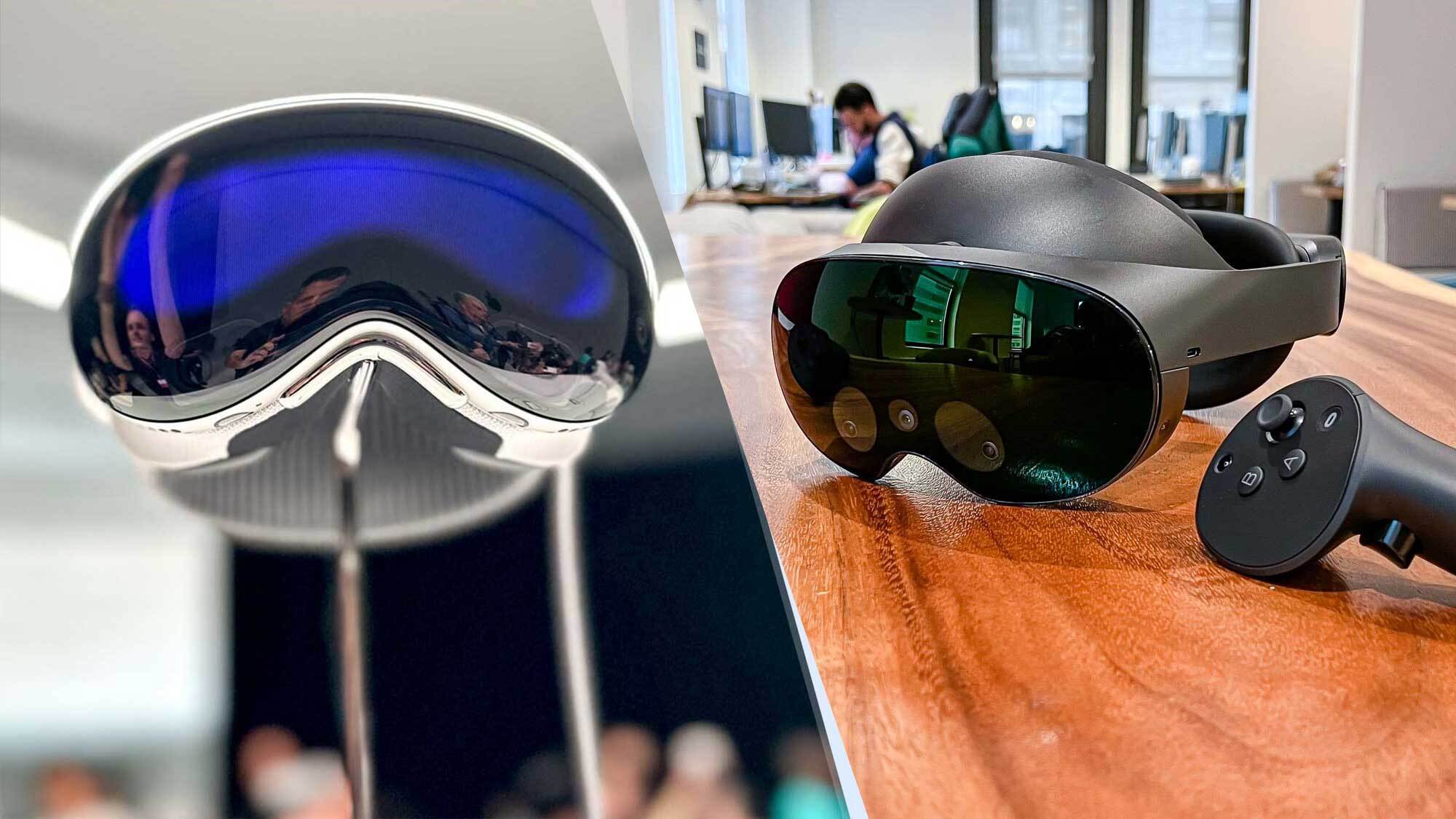
For a second, when Tim Cook and Apple announced the Apple Vision Pro at WWDC 2023, we thought we had never seen anything like this before.
And then we remember that there’s been a mixed reality headset available since October 2022 and it even has “Pro” in its name. It’s just made by Meta, not Apple.
But despite these similarities, anyone who has seen what Apple is promising and seen what Meta has already produced can tell that there are some differences. And it goes beyond the vast gulf in price — though it is vast. Both headsets attack mixed reality in different ways. The Apple Vision Pro starts in mixed reality by default and largely stays there, whereas the Meta Quest Pro feels more comfortable living in a truly virtual world even though it can flit back and forth on the mixed reality spectrum.
So now that we’ve gone hands-on with the Apple Vision Pro and the Meta Quest Pro, we wanted to compare the two Pro headsets and see which one is not just the better VR headset, but which one is best for you. Here’s how the Apple Vision Pro and the Meta Quest Pro face off against each other.
Apple Vision Pro vs Meta Quest Pro: Specs
Apple Vision Pro vs Meta Quest Pro: Price
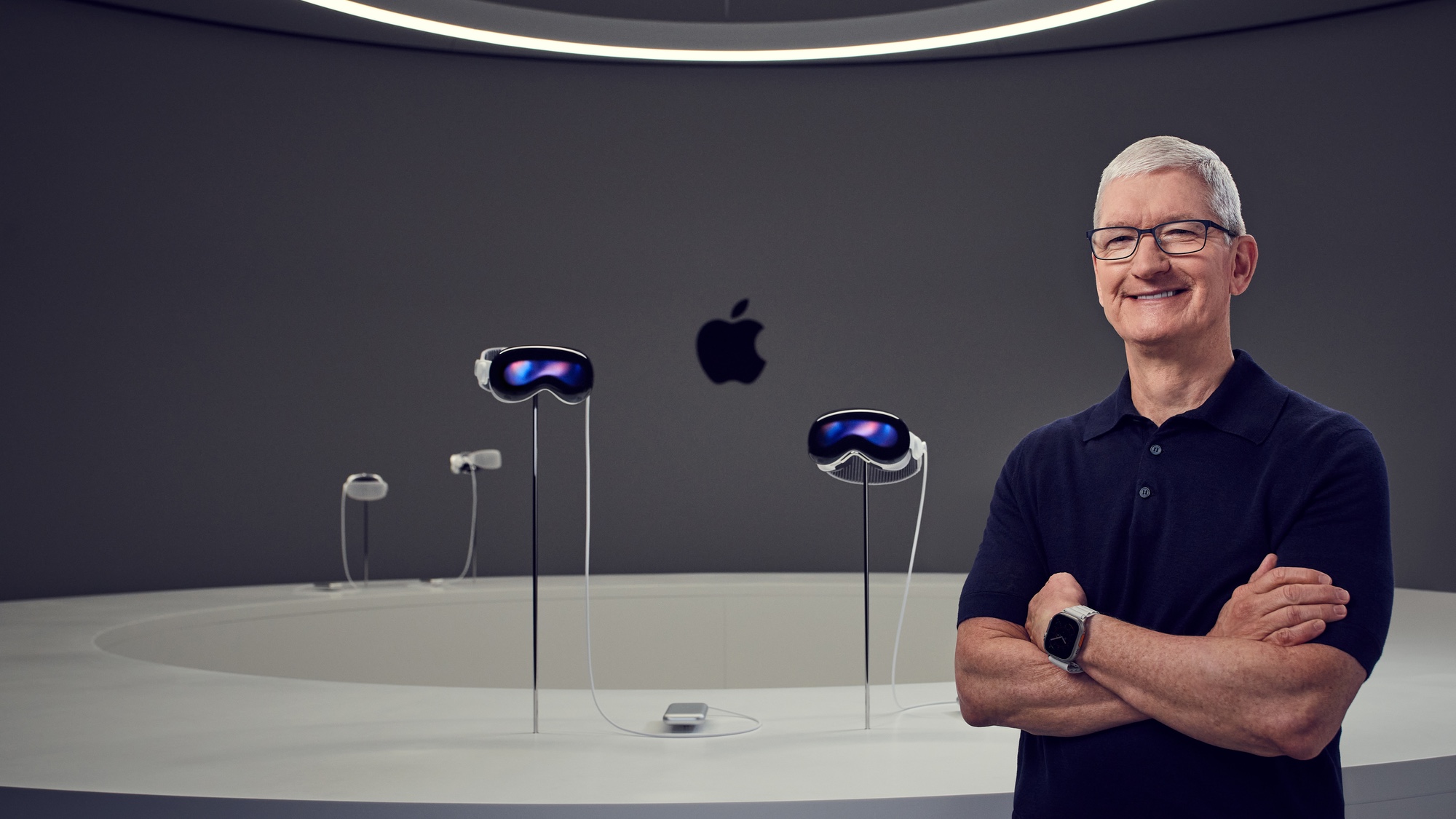
Apple has set the Vision Pro price at $3,499 with a release date of “early 2024.” And that’s just the cost of the headset. It doesn’t include the external battery (which could cost extra), different Light Shields or Head Bands or the custom Zeiss optical inserts for those who need glasses. Apple has yet to reveal the prices for those add-ons, but it could easily push your total expenditure over $4,000.
If you are ready to be an early adopter, you can check out our guide on how to get the Apple Vision Pro if you want to pre-order the headset.
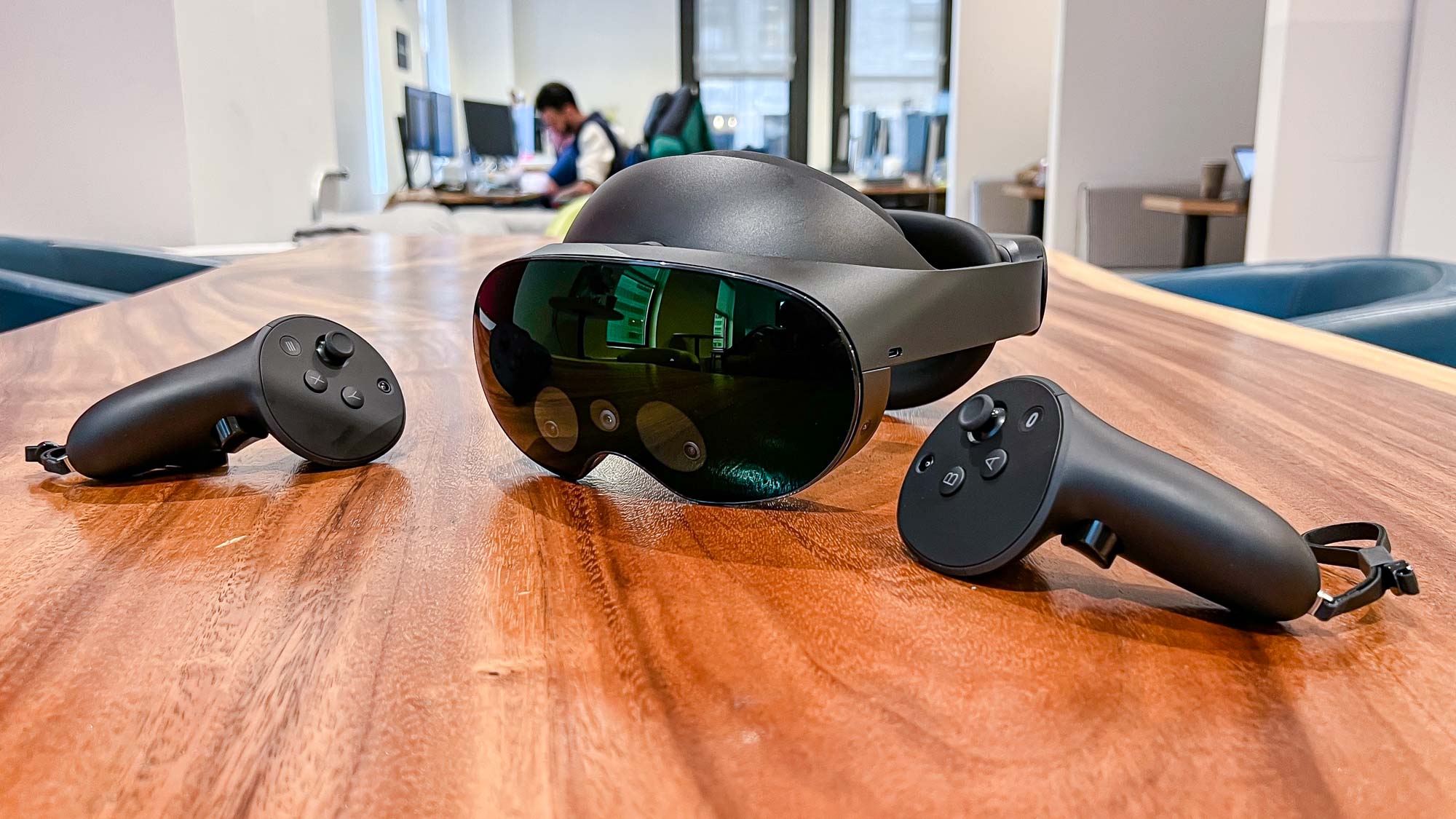
This means that the Meta Quest Pro is no longer the most expensive mainstream headset you can buy. Admittedly, Quest Pro had already been trending away from that title. While it launched at a price of $1,499, a price reduction has brought the cost of the headset to just $999. With that price, you get the headset with 256GB of storage, the charging cable as well as a set of TouchPro controllers.
Apple Vision Pro vs Meta Quest Pro: Design
There are some similarities between the two headsets. Both have a general ski google design aesthetic and you can see the front-facing cameras on the front visor of both headsets. But that’s about where the similarities end.
Let’s start with the front of the visor. The Vision Pro’s visor features a curved sheet of 3D laminated glass that not only serves as a lens of the camera array but also shows the world how immersed you are. This is thanks to a new feature called EyeSight to show others around you your eyes while you’re using the headset unless you’re fully immersed, in which case people will see a purplish hue occupy the front display.
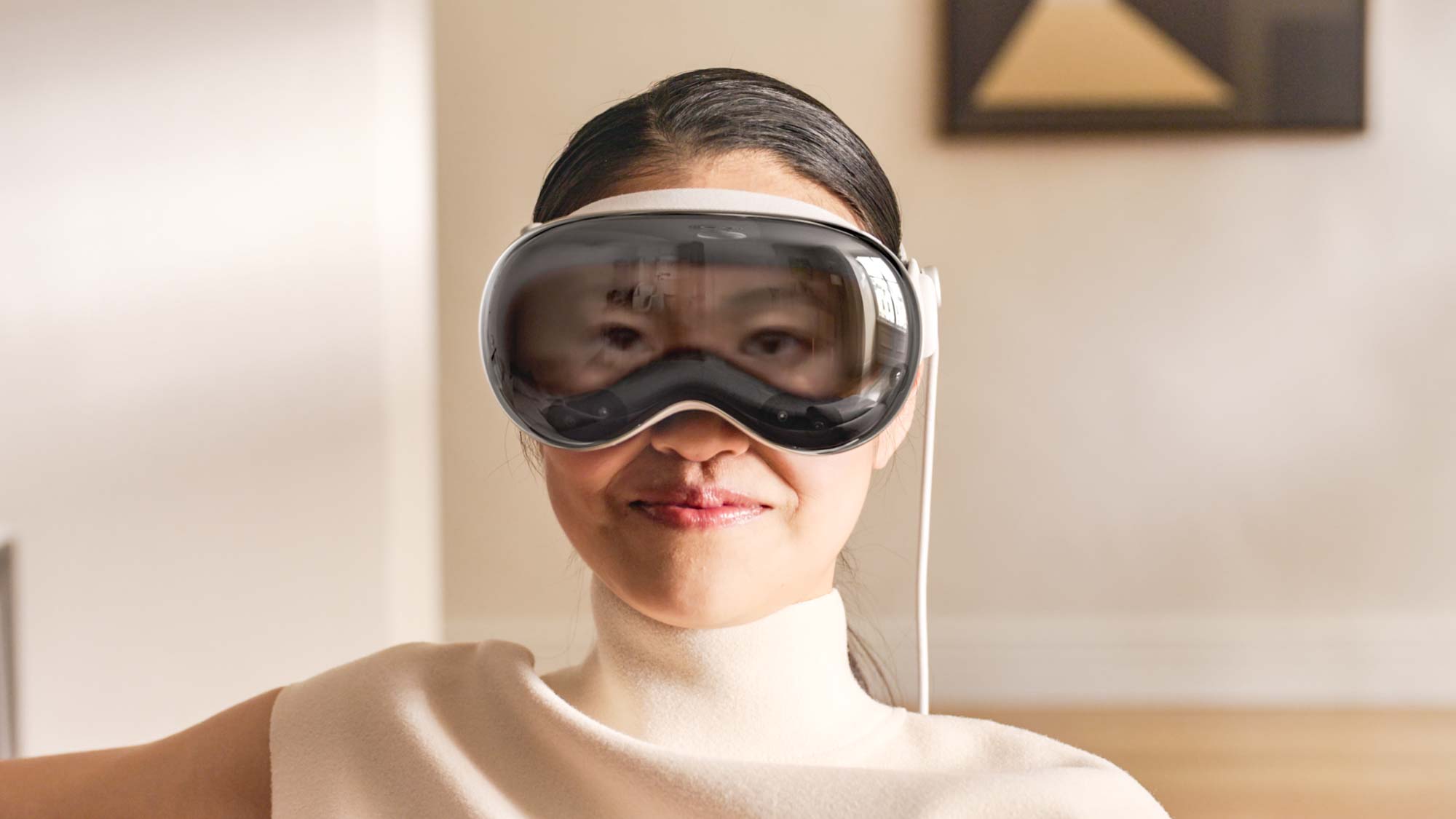
The Meta Quest Pro doesn’t have anything similar to EyeSight, for better or worse. Instead, the front of the headset shows off two front-facing cameras that allow for the Quest Pro’s full-color passthrough.
Both headsets place importance on ergonomics, though they tackle the problem in different ways. The Vision Pro is all about a custom, comfortable fit. There are a variety of sizes for the modularly designed Light Seal (what Meta calls light blockers on the Quest Pro) and Head Band to ensure the curved custom aluminum alloy headset fits the geometry of your face. The Head Band also features a knob for micro-adjustments once you’ve selected the correct size.
Meanwhile, the Meta Quest 3 takes a one size fits all approach, though you can make adjustments. There is a dial on the front and rear of the headset to adjust screen distance and ensure a secure fit, respectively. You can also install partial or full Light Blockers similar to the Vision Pro’s Light Seal to block or unblock peripheral light for greater or less immersion in VR.
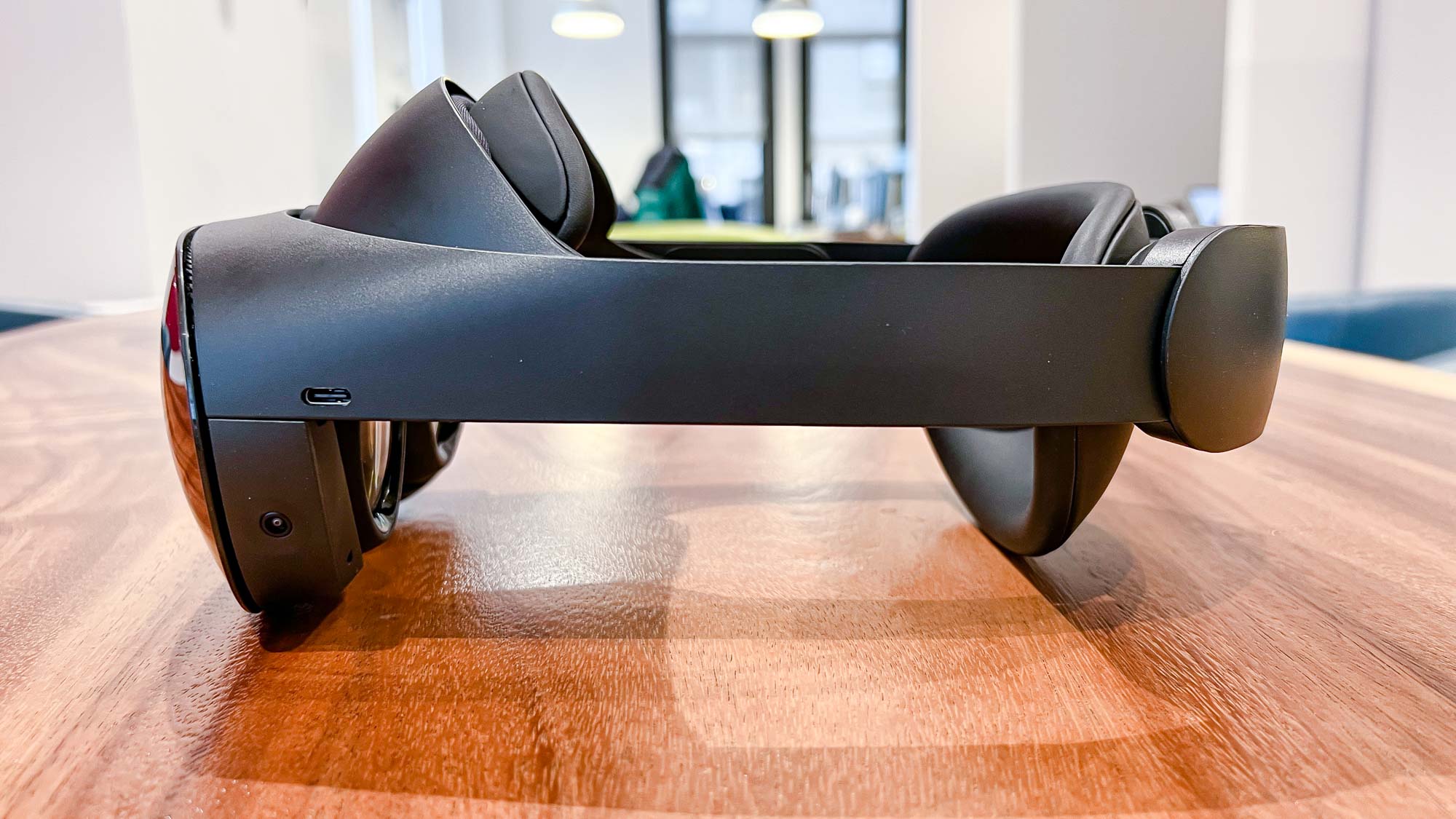
But if Apple’s big design win is a custom fit, Meta’s is a balanced, lightweight headset with a built-in battery. The Vision Pro eschews a built-in battery (more on that later) whereas Meta has moved the Quest Pro’s battery to the rear of the headset for ergonomic balance. And while the approximately one-pound weight of the Apple Vision Pro is impressive, the Quest Pro managing to be just 1.59 pounds with a battery built in is equally impressive.
Ultimately, both the Vision Pro and the Quest Pro are incredibly well designed, though the edge probably goes to Apple. In particular, the Vision Pro having the Light Shield completely blocking out light by default and instead using a crown at the top of the headset to control your level of immersion feels notably more convenient than the modular Light Blockers of the Quest Pro. But on design alone, you could make an argument for it coming down to your personal preference given the $2,499 gap in price.
Apple Vision Pro vs Meta Quest Pro: Displays

Unfortunately for the Quest Pro, here’s where Apple’s $3,499 price tag comes with some serious upgrades.
The Vision Pro features two Micro OLED displays inside the headset, each about the size of a postage stamp with a combined 23 million pixels. Based on an estimate from Display Supply Chain Consultants, the expectation is this will result in a 3800 x 3000 display resolution, which matches up with Apple’s claim of “more pixels than a 4K TV for each eye.”
The Quest Pro simply doesn’t come close to this. While pancake optics allows the headset to get more pixels into a smaller size, the resolution is 1832 x 1920 per eye on the two LCD display panels.
One thing where both displays may be evenly matched though is refresh rate. Both mixed reality headsets can manage a 90Hz refresh rate on their twin displays, though Apple’s come with a special party trick that allows it to manage 96Hz on content created at 24fps.
If there’s any display spec where the Meta Quest Pro can manage to beat the Apple Vision Pro it’ll be the field of view (FOV). The Quest Pro manages a 106-degree field of view and we don’t know what the Vision Pro can manage yet. However, since the PSVR 2 manages to hit 110-degree FOV with its OLED displays, I’m personally expecting the Micro OLEDs on the Vision Pro to at least match that figure.
Apple Vision Pro vs Meta Quest Pro: Controllers

Both of these headsets have controller support. Both have eye-tracking and hand-tracking. But only one of these headsets is designed to be used entirely without controllers.
Thanks to the Apple Vision Pro’s 12 cameras, six microphones and five sensors to track your eyes, hands and voice commands, the mixed reality headset is able to ditch controllers entirely. Instead, you use a combination of gestures and voice commands to navigate and use the headset.
And the way these gestures and voice commands are incredibly natural. The 12 cameras can capture your movements with your hands in natural positions like on your lap or to your side rather than directly in front of the headset. And thanks to a ring of LED lights in the headset, the eye tracking is particularly impressive — especially combined with voice commands.
One example Apple showed off in its reveal of the Vision Pro was the ability to just glance at a search bar and start dictating what you want to search for. The Vision Pro would then automatically start typing out the query, all without you lifting a finger. If you don’t want to rely on hand gestures or a virtual keyboard the headset also supports the Apple Magic Keyboard, Mouse and Trackpad.
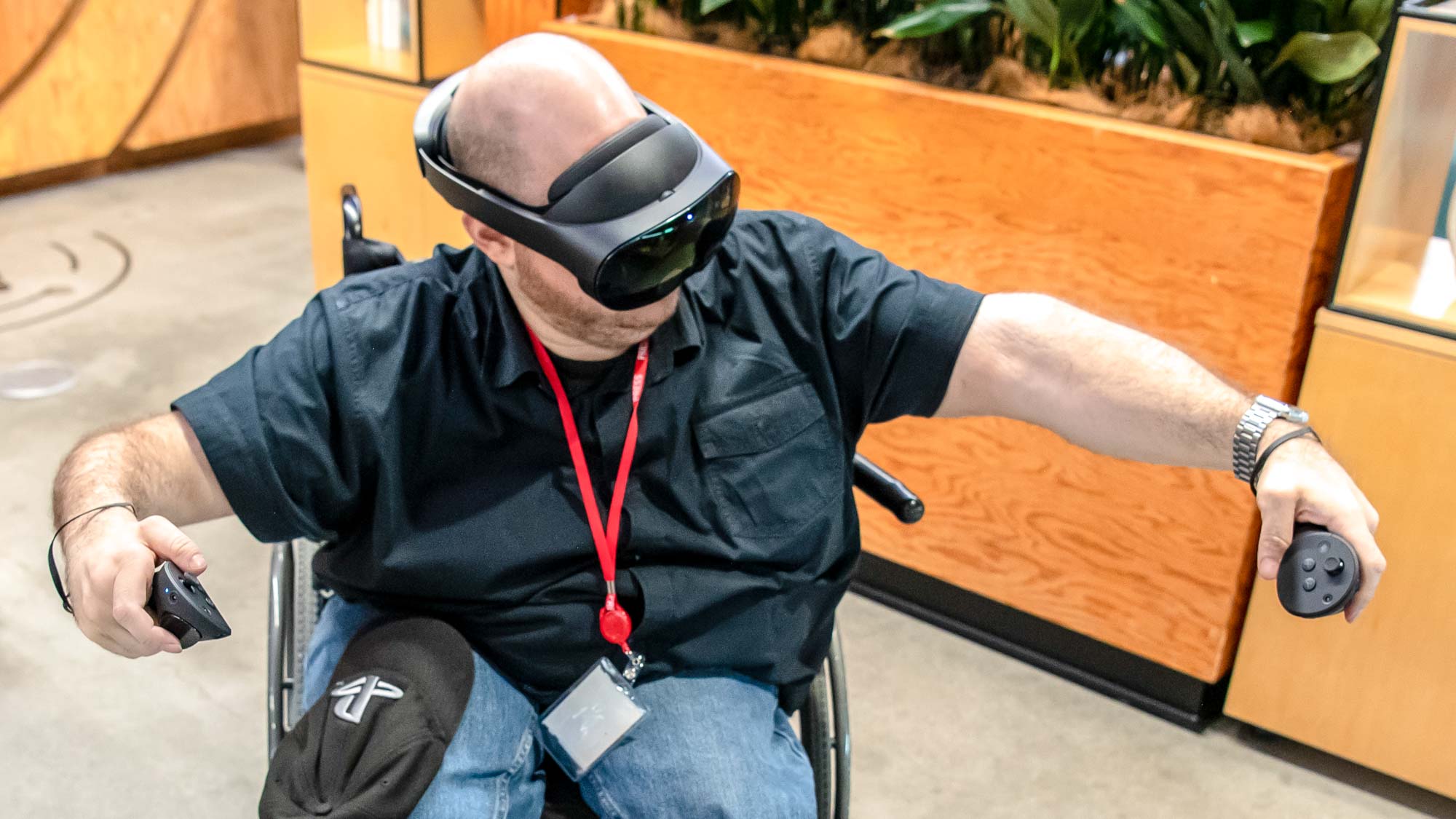
Unfortunately, the Quest Pro just cannot fully match this controller-less experience, though to be fair this is likely a shortcoming of being the less expensive headset because it can match some of these features. The Quest Pro can manage hand tracking, and thanks to eye-tracking it can also handle foveated rendering, something the newly announced Meta Quest 3 is probably going to miss out on because eye-tracking increases headset manufacturing costs. But most likely, if you’re using a Quest Pro, you’re using the Quest Pro’s TouchPro controllers.
To be fair, these are actually really good VR controllers. The TouchPro controllers don’t need a tracking ring thanks to self-tracking technology that gives them 360-range of motion and TruTouch haptics give incredibly realistic haptic feedback. There are even stylus tips for writing with the controllers. If you built the ideal VR controller, it might very well be the TouchPro controllers that come with the Quest Pro.
And one place where the TouchPro controllers may have an advantage is in gaming. The Apple Vision Pro will support popular Bluetooth controllers like the PS5 DualSense for playing Apple Arcade games, but we have yet to see how native VR/XR games would work on the Vision Pro. But aside from gaming, the Vision Pro’s controller-less experience seems to be the clear winner for now.
Apple Vision Pro vs Meta Quest Pro: Performance
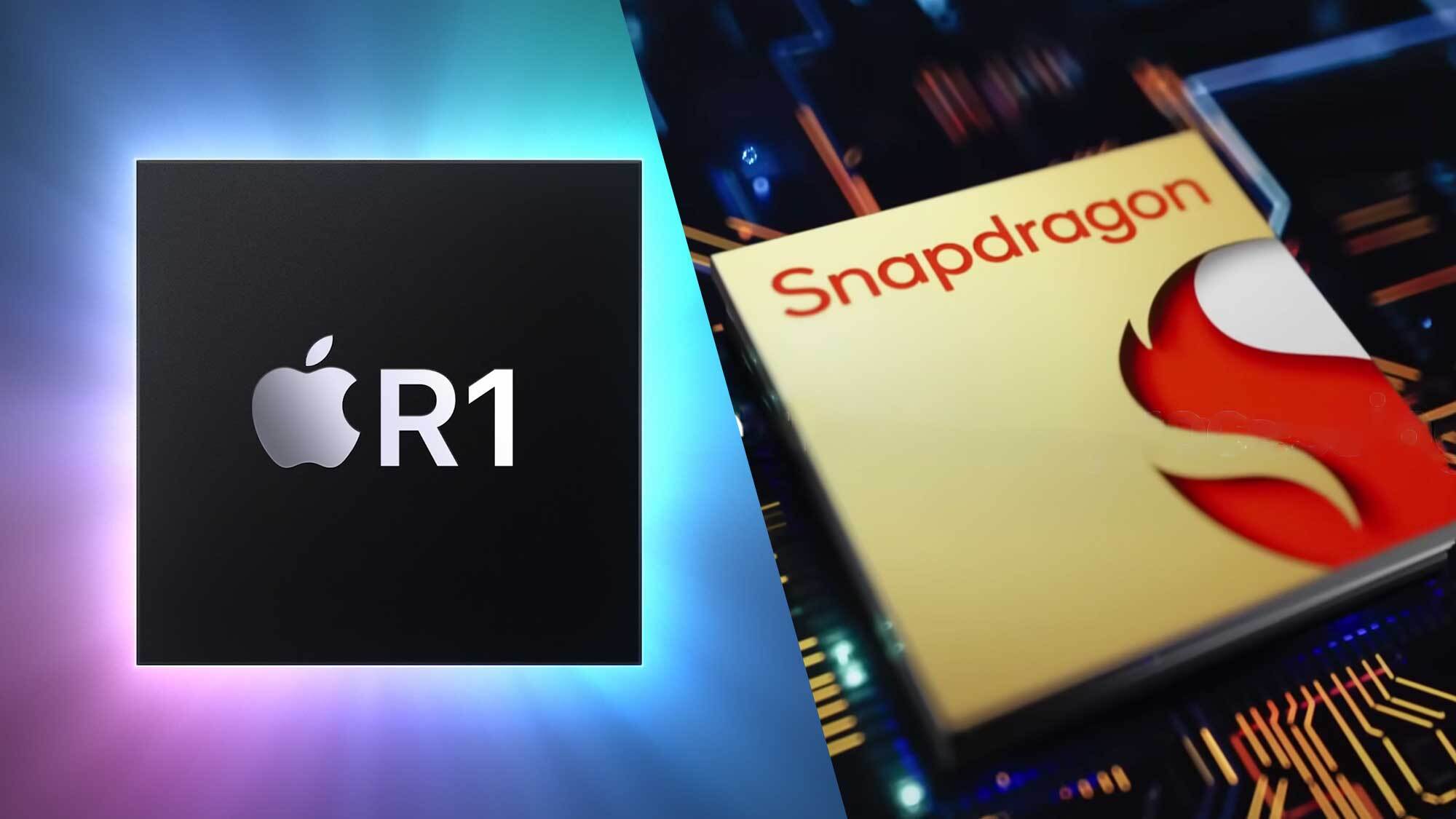
We haven’t tested the Apple Vision Pro, and Apple has yet to reveal the full power of its new R1 processor other than it keeps input lag on the Vision Pro at around just 12ms. But the expectation is that the Vision Pro will be more powerful than the Meta Quest Pro.
This is largely down to the M2 processor that Apple has put in the headset along with the aforementioned new R1 chipset, which Apple says is largely focused on sensor inputs and ensures the display doesn't lag behind. The M2 does most of the heavy lifting, and it absolutely dominates the mobile Qualcomm Snapdragon XR2+ chipset that is in the Quest Pro.
To put this gulf in power into perspective, a MacBook Air 2022 with an M2 processor and just 8GB of RAM can give us some clue as to what to expect. On Geekbench 6, this specific MacBook Air scored 1,505 for single-core performance and 5,611 for multi-core performance. Meanwhile, a Meta Quest Pro (listed as an Oculus Quest Pro) scored just 523 and 1,055 respectively. That is a massive difference in performance, and yet another instance of the Apple headset flexing its pricier hardware.
Apple Vision Pro vs Meta Quest Pro: Battery life
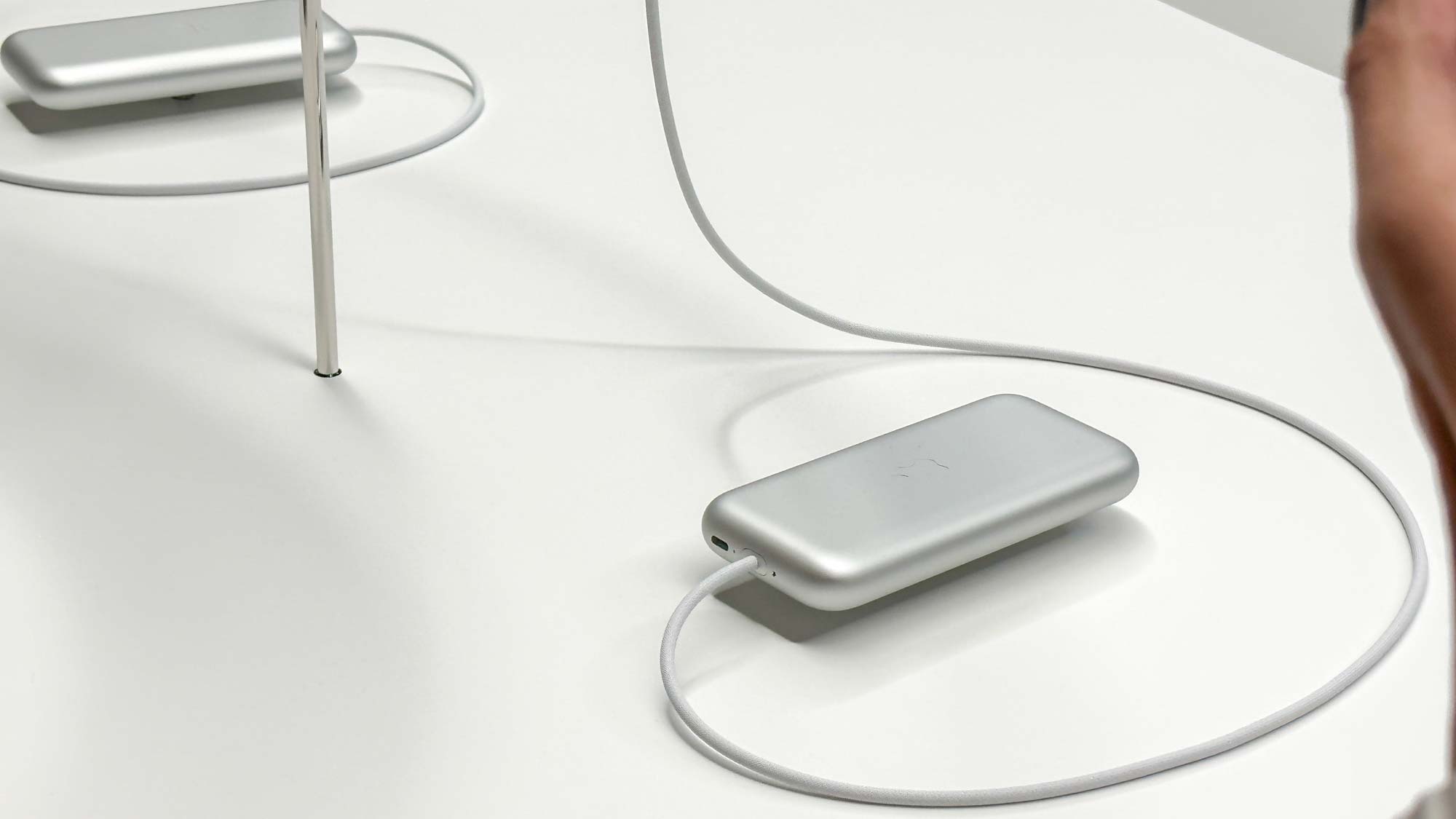
For all the money you have to spend on the Apple Vision Pro, the biggest mark against it has to be the lack of a built-in battery.
Admittedly, as we just discussed, the Vision Pro is essentially a MacBook for your face. So the battery you’d need for any sort of real use probably would have affected the lightweight design of the Apple headset. After all, the Quest Pro weighs around half a pound more than the Vision Pro, and the built-in battery is a likely culprit.
Still, the Apple headset only works plugged in — either to a wall outlet for all-day use via USB-C or to an external battery with a two-hour battery life via a proprietary cable. If Apple announces you can also plug it into a MacBook that would be a small consolation, though we imagine that would drain your laptop battery awfully fast.
That means that the Meta Quest Pro is the only true standalone headset of the two. And even if you consider the Vision Pro standalone once it is plugged into its external battery pack, the battery life is worse than the Quest Pro’s integrated battery. The Apple battery pack only is rated for two hours of battery life, whereas the Quest Pro manages 2.5 hours on average with a full charge.
Apple Vision Pro vs Meta Quest 3: Apps, Games and OS

The Apple Vision Pro gets its own operating system — visionOS. This operating system will allow developers to natively create 3D mixed reality applications for the Apple headset, though so far those are few and far between. In his hands-on review, our editor-in-chief Mark Spoonaeur tapped Mindfulness and Encounter Dinosaurs as two visionOS apps that really show off the Vision Pro’s mixed reality capabilities.
Thankfully, the Vision Pro won’t be fully reliant on a brand-new OS at the start. Apple is also bringing iOS and iPad OS apps into the Vision Pro App Store, giving you literally thousands of apps to choose from as soon as you power on the device. Apple also says that over 100 games from Apple Arcade will be playable on the Vision Pro, including NBA 2K.
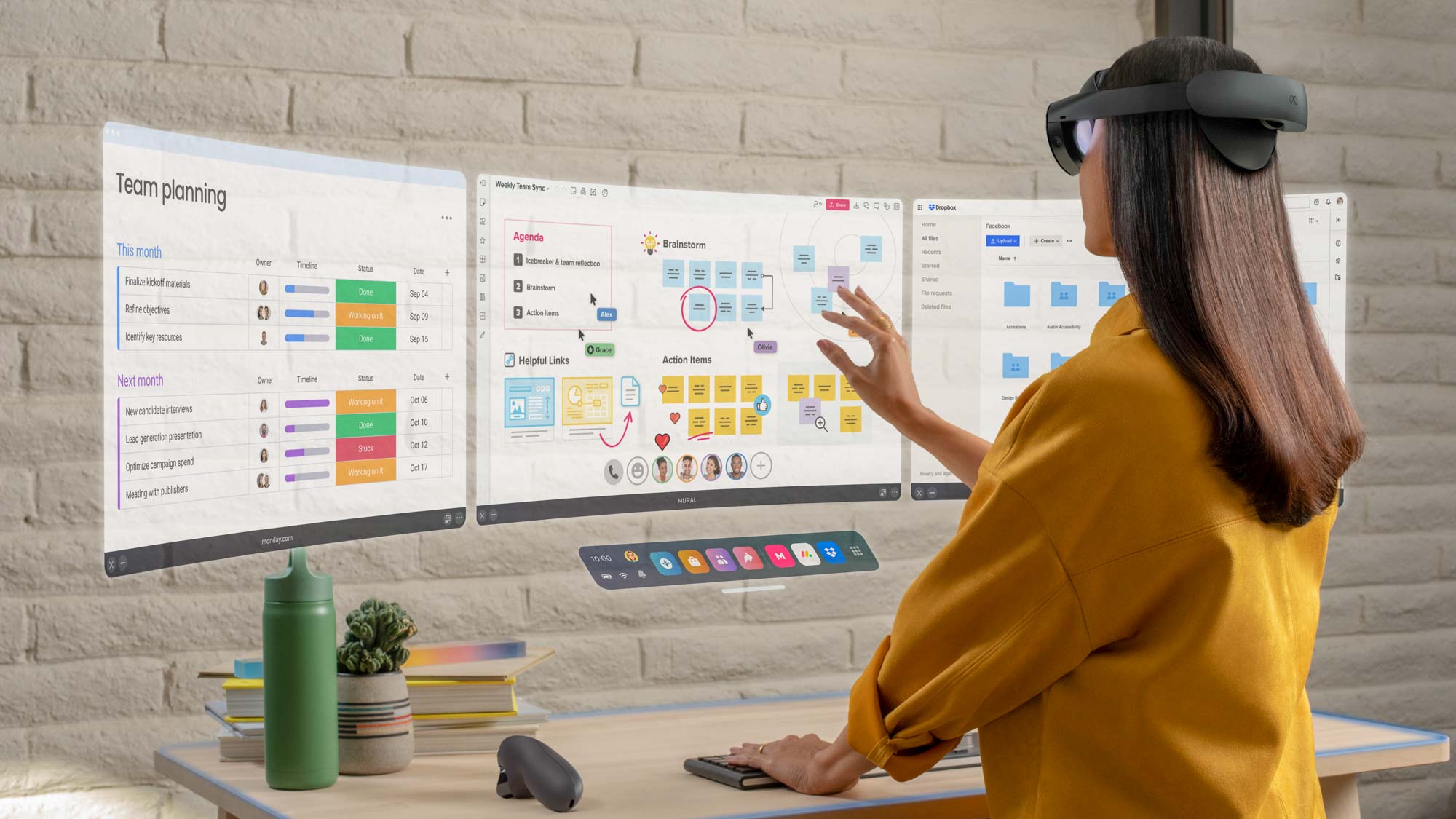
The Meta Quest Pro unfortunately doesn’t get quite the same advantages. It does get access to all the best Quest 2 games and the Meta Quest 2 apps library. It also gets some new exclusive apps that utilize the headset’s mixed reality features. It may even get access to similar mixed reality games and apps designed for the Quest 3, though there’s no guarantee that this will happen.
The problem here is that both the Apple Vision Pro and Meta Quest Pro are aimed largely at productivity — a.k.a working in mixed reality. And for that, the Vision Pro gets the edge thanks to the vast library of iOS, iPad OS and visionOS apps, all in one App Store. Additionally, the ability to just open your MacBook up and work on it in the Vision Pro gives it an edge over the Quest Pro, which has some second-screen functionality through apps but nothing near as seamless as what the Vision Pro is promising.
Even Microsoft giving the Quest Pro access to Teams, Microsoft Office apps and even Xbox Game Pass probably won’t be enough to beat being in the Apple ecosystem.
Apple Vision Pro vs Meta Quest Pro: Mixed reality

As we mentioned numerous times, these are both mixed reality headsets. That means, unlike a VR headset, they both have the ability to take you into the physical world while you’re wearing the headset. Because of this, both the Vision Pro and Quest Pro have full-color passthrough thanks to cameras on the front of the headset, that digitally recreate your surroundings in the headsets’ displays.
But Apple has spared no expense to make sure that your digital person is as real as possible. In addition to EyeSight, which duplicates your eyes onto a front display rather than having them be visible naturally, there’s also Digital Persona, which digitally replicates you for use in FaceTime. It’s a fairly realistic representation of yourself and a vast improvement over Meta’s avatars.

Again, this could be an example of what can a $3,499 headset do versus what can a $1,499 (now $999) headset do, but the difference is significant. Apple’s headset should allow you to truly work in mixed reality the way you would normally, minus the fact that you do still have a computer strapped to your face plugged into a wall or battery pack. The limitations are more obvious in Meta’s mixed reality ecosystem, which relies on relatively cartoonish avatars to recreate you digitally.
Aside from the differences in how you are represented to others, there are also differences in how the real world is integrated into your computing experience. The Apple headset starts by putting you in your surroundings and then you can use a crown on the top of the headset to adjust your level of immersion, with the most extreme example being put fully in VR.
But Apple seems to market going fully into VR as a rarity rather than a normal experience. The Meta Quest Pro doesn’t; instead, you can choose to be in VR or toggle on the passthrough in your settings or through a controller shortcut. Otherwise, it’s up to the app you’re using to take advantage of the headset’s mixed reality capabilities. And unlike the Vision Pro’s Light Shield, which stays on the entire time, you can use included partial Light Blockers for improved immersion when in VR or purchase optional full light blockers for something akin to the Quest 2.
So if you want to be in a virtual world, the Quest Pro may actually be better for that, though we won’t know for sure until we fully review the Apple Vision Pro. But for mixed reality, the Apple headset feels like the more natural mixed reality experience.
Apple Vision Pro vs Meta Quest 3: Which headset is best for you?
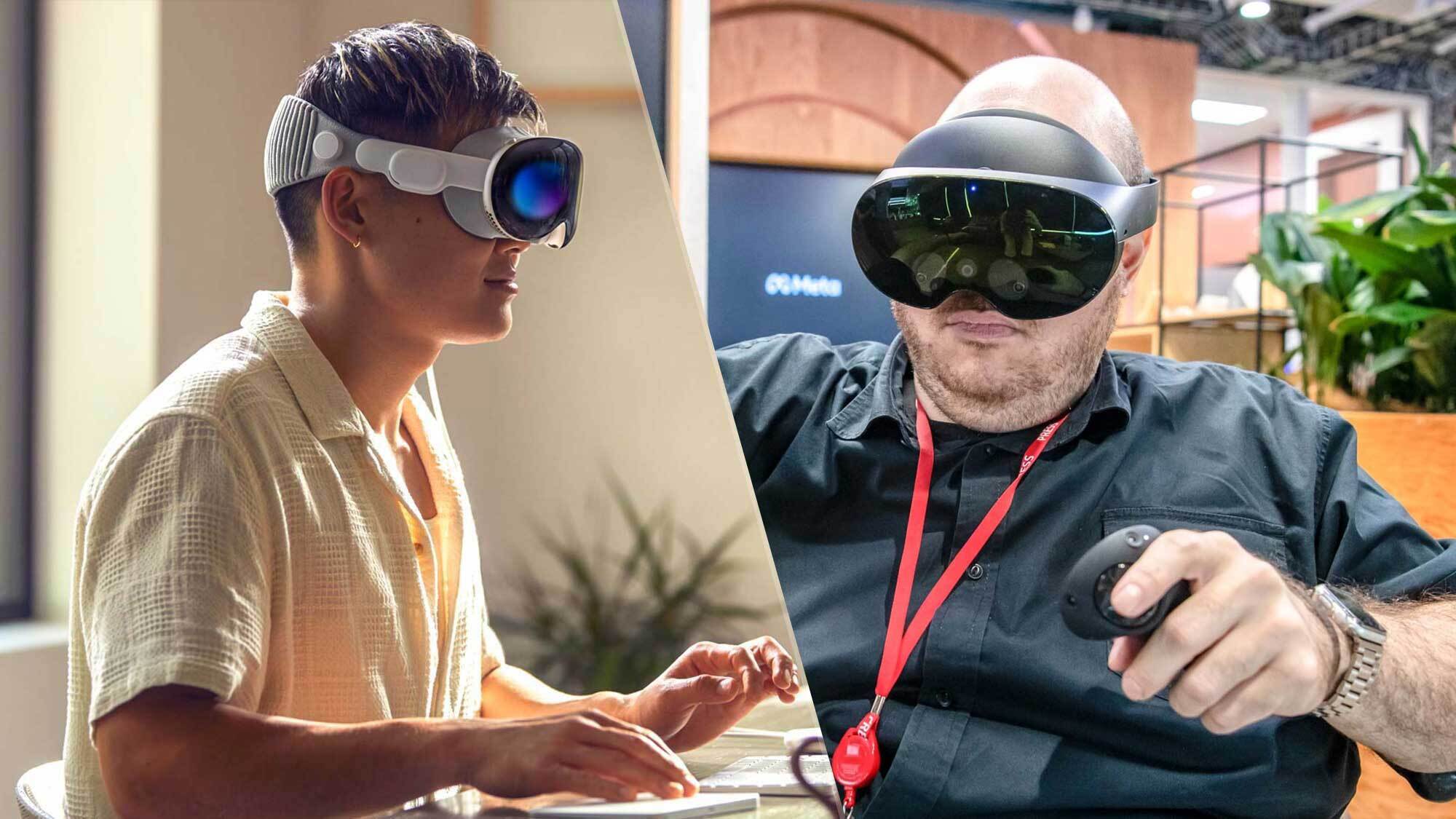
It’s tough to pit these two against each other given the Apple Vision Pro’s superior spec sheet. The extra $2,499 Apple is charging you isn’t a waste of money, you get serious upgrades with better mixed reality features, more power and a controller-free experience. If you really want to experience mixed reality, I’d save up for the Vision Pro or wait for a cheaper version to come out that ditches some bells and whistles for a more favorable price tag.
Even if you’re dead set on being an early adopter and want to try mixed reality right away at a budget price, the Meta Quest Pro may not even be the best solution for you. Meta has stated that the Quest 3 is going to be its “most powerful headset” and early hands-on experiences with it suggest the full-color passthrough is improved over the Quest Pro. If you’re okay with missing out on eye-tracking and foveated rendering, it may frankly be the better value at $499 than the Quest Pro at $999, even if you want to spend time in mixed reality rather than virtual reality.
We’ll only know for certain once we test the Apple Vision Pro for ourselves, but for now, it seems like the winner on paper. And even though the Meta Quest Pro is a solid mixed reality headset, it’s tough to even recommend it over the upcoming Meta Quest 3. So for now, I’d recommend waiting for the Vision Pro or Quest 3, and skipping the Quest Pro altogether unless you simply can’t wait.







